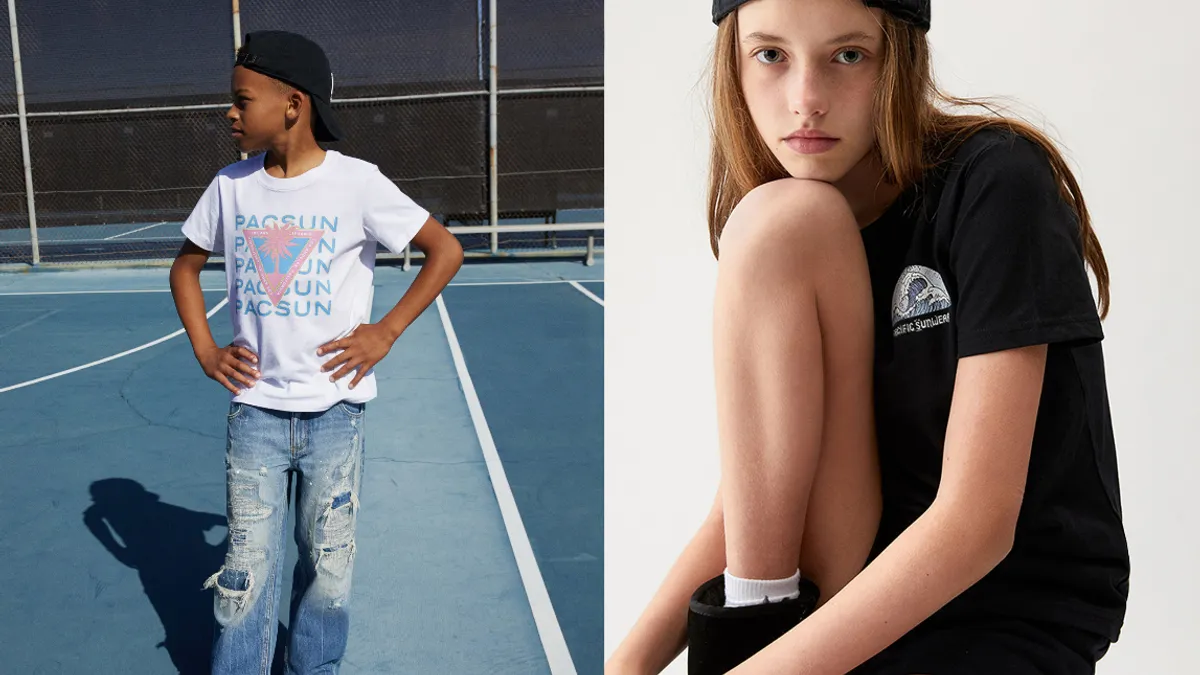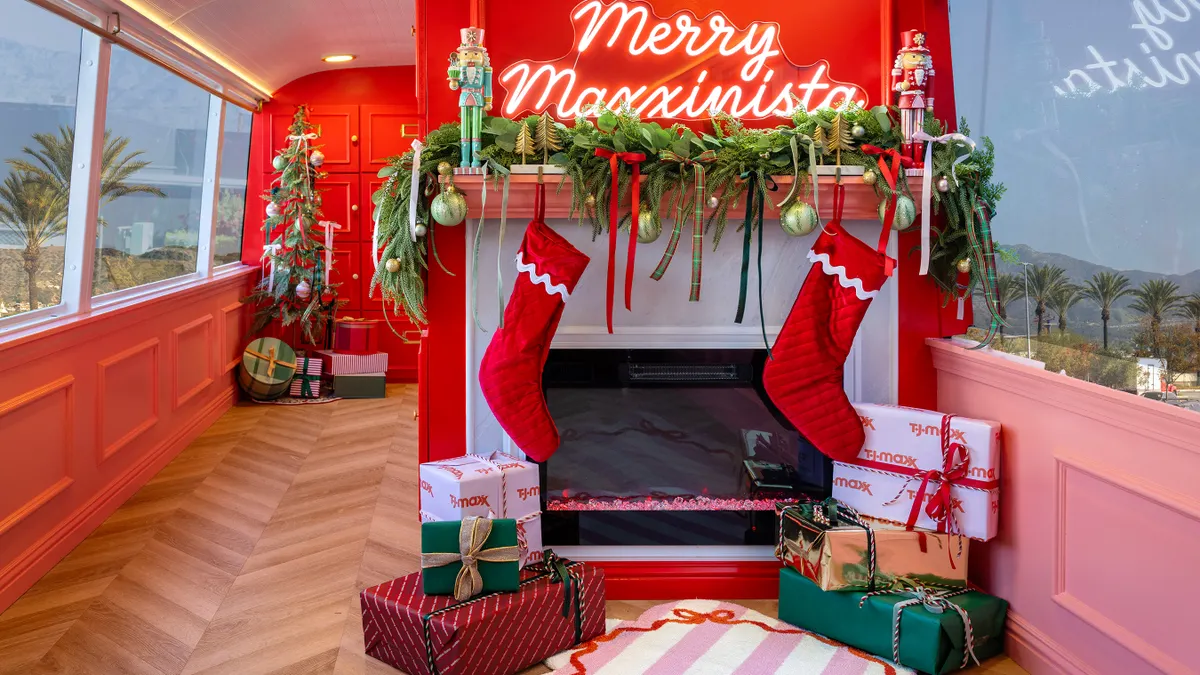Whether you walk into a brick-and-mortar store or visit a retailer’s website, you’re almost certain to find clothing split into two categories: men’s and women’s.
This gender binary is engrained heavily into the retail shopping experience, with physical stores often split down the middle between the two options.
That’s changed over the past few years, though.
Plenty of luxury brands have launched clothing collections that don’t adhere to the traditional binary, instead using terms such as gender neutral, gender free or unisex. All these terms — rooted in social movements intended to deconstruct gender traditions — are used by retailers to describe a product meant for a broader audience, regardless of how they identify.
From March 2020 to July 2021, 11 gender-neutral launches from major brands occurred in categories such as apparel, beauty, accessories and more, according to a report from Coresight Research.
Lifestyle brand Fred Segal launched its first in-house clothing collection this month, which is a gender-neutral set of T-shirts, sweatshirts, hoodies and sweatpants. Luxury retailer Stella McCartney’s website has a unisex section that features bottoms, shirts, hats, bags and shoes.
Gucci’s gender-neutral selection has a dedicated page on its website as well, titled MX, stating that it is meant to “deconstruct preconceived binaries and question how these concepts relate to our bodies.” Prada also launched its Timecapsule NFT Collection in June, which features gender-neutral physical products and gifted non-fungible tokens.
Here’s a look at the opportunity brands see in the gender-neutral category, and what considerations might be made.
'Make sexy tops and put them on men'
The shopping habits of consumers have evolved since the time many major brands were founded.
Around 1.2 million LGBTQ people in the U.S. identify as nonbinary, according to June 2021 data from UCLA’s Williams Institute. However, gender-neutral clothing isn’t just of interest for nonbinary shoppers, it also appeals to those who do identify within the binary.
Sixty-one percent of Gen Z thinks brands could be doing more to prove that “style should not have a gender,” according to The Gen Z Fashion Report by student affinity network Unidays. The survey of more than 4,000 Gen Z students across the U.K., U.S. and Australia conducted this year also found that 45% want brands to market gender-neutral clothing more explicitly.
"If you're gonna create gender free fashion, make sexy tops and put them on men," Rob Smith, CEO and founder of gender-free company Phluid, said. "[D]econstruct things, because that's the way young people are starting to express themselves."
The growth opportunity for retailers isn’t just with younger consumers. With celebrities like Harry Syles and Brad Pitt wearing skirts on magazine covers and on the red carpet, the audience for clothing with no labels is expanding to an older age group.
“[M]y characterization is that there is definitely an opportunity for older consumers too,” Erin Schmidt, senior analyst at global advisery and research firm Coresight Research, told Retail Dive. “We're especially seeing that in the accessible luxury and luxury segments.”
Smith, whose company also includes apparel and accessories store The Phluid Project, would agree with that.
“Our age group is older than I thought it would be,” Smith told Retail Dive. “[O]ur average age is 30 years old.”
Beyond oversized shirts
Launching a gender-neutral collection filled with one-size, oversized shirts and hoodies is an easy way to bypass more complex questions of size and fit within this category. Yet, putting thought into it can result in a more unique approach.
“[W]e're seeing the big players enter this space and some of them are doing a good job at it, some are doing a horrible job at it because they're doing it the old-fashioned way, which is an oversized sweatshirt, sweatpants, sweat shorts,” said Smith.
The U.K.-based brand Gender Free World has a sizing chart unlike most major retailers, where shoppers select both a body shape and size. There are four body shapes to choose from, which allow customers to say, for example, if they need more space for their hips or if their bust is larger than the rest of their body. There are also up to nine sizing options to choose from. This allows shoppers to have a more tailored, personalized shirt that isn’t based on the typical sizing chart mass retailers use.
Gender-neutral fashion is related to the push toward inclusivity that the retail industry has grappled with for years. Inclusive sizing has only recently become more common as consumers have pressured companies to cater to more than one body type. In the same way, creating gender-neutral apparel has the power to create a more inclusive shopping experience for customers.
“It's about self-expression. It can mean … deconstructing the way we see gender and fashion,” Smith said. “It's a bold move when you start to put skirts and dresses into gender-free collections.”
'The entire system is binary'
While the trend has been spearheaded by small brands and luxury retailers, more accessible companies like Pacsun and Gap have also launched gender-neutral collections.
With some forethought and planning, Coresight’s Schmidt thinks gender-neutral options are not just a luxury trend, but an opportunity for all retailers.
“I think the gender-free category is definitely something that all retailers and categories should be thinking about and looking at as a consideration of whether it's a fit for them,” said Schmidt.
Executing on gender-neutral clothing in a non-performative way requires effort on multiple fronts, though. And some retailers may wonder if they are ready to enter the space.
For mass retailers, there are existing infrastructure and product development processes that might need to be rethought when launching a gender-neutral line.
Target carries some gender-neutral clothing. However, its website has dedicated pages for gender-neutral collections that are still titled with gendered terminology. For example, one page on its website is titled “Gender Neutral: Girls’ Clothing.”
When asked why the categorization of its gender-neutral pages includes gendered terms, a Target spokesperson told Retail Dive this is because of the structure of its website and because many items are cross-tagged to other departments, like women’s and men’s. Target declined to say if it had plans to update the webpage titles.
Through his work consulting with companies via the education arm of his company, G.E.T Phluid, Smith knows that the work needed to launch gender-neutral products is difficult. In Smith’s perfect world, all retailers enter the gender-neutral space and do it right.
“Everything is very binary, the entire system is binary. So to deconstruct that takes so much work,” says Smith. “And it might take a little longer and a little more work. But it's better to do something and do it with authenticity than not do it at all … And that means working harder.”























